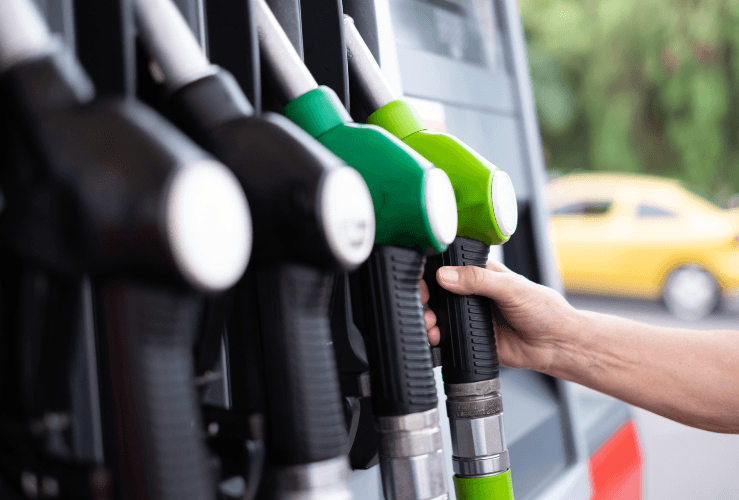Several fuel types/powertrains have entered the market in recent years, joining more established options. But which fuel is best for your fleet? Which one matches your performance, cost, and environmental responsibility needs?
There's no simple answer to this question. However, careful scrutiny of all the relevant factors will help you make a well-informed choice.
Arguably, it's best not to demonise any one particular fuel type at this point in time - since many technologies and their surrounding infrastructure are still developing (e.g. the range of electric vehicles and the availability of charge points).
Key areas to look at include:
- Operational requirements
- Fuel efficiency/cost
- Sustainability
- Driver needs/preferences
- Tax and incentives
- Existing and forthcoming legislation
In this guide we'll help you develop an effective fuel selection process.

The needs of your business and drivers
Aim to answer the following questions:
- Who will drive the vehicle: salesperson, service technicians, commercial driver?
- What will the vehicle be used for? Transporting goods, supplies, tools?
- When will the vehicle be used? Daily? A few times a month? Seldom?
- Where will the vehicle be going? Long distance national or international routes? Or local destinations?
- Why does it matter which fuel you choose? Do you need to meet regulatory requirements? Or meet your own company's Corporate Environmental Sustainability (CSR) policy?
The answers to these questions will inform your fuel selection process, manage fuel consumption, and get an attractive return on investment (ROI).

Factors informing Total Cost of Ownership (TCO)
Developing a Total Cost of Ownership (TCO) model will help you work out fuel and maintenance costs.
Consider:
Fuel economy
Fuel economy is impacted by how and where a vehicle is driven - as well as by how much a particular fuel is used to carry out given day-to-day operations.
Emissions
Most businesses are keen to show customers and clients they are doing their bit for the environment. Careful fuel selection is one of the most effective ways to do this, whether or not it is part of an internal CSR policy.
Regulations
National or local regulations can impact vehicles that use certain types of fuel. For example, only diesels that comply with Euro 6 standards can be driven in London's Ultra Low Emissions Zone, without incurring a fee.
It's important to gather accurate mileage, mpg figures and fuel data when making an informed decision on fuel type. It makes sense to take as much of this data from your own fleet as possible.
Note that official manufacturer MPG figures can be significantly overstated, perhaps by nearly a third.
Incentives
Certain options are being encouraged by the government through incentives. For example, certain EV vans can be sold at a 35% discount (max £2,500.) - which is included in the purchase price. Additionally, EV vans do not attract vehicle Excise Duty (VED) - which is considered an incentive. However, EVs will be required to pay VED from April 1, 2025.
By now you should have determined:
- Driver needs
- Vehicle purpose
- Use duration
- Destinations/distances
- TCO

Choosing a Fuel/Powertrain for Your Fleet
Now it’s time to choose a fuel type. Here's a rundown of the pros and cons of each main fuel/powertrain type...
Petrol
Pros: Petrol vehicles are less costly to buy outright; cheaper to refuel; many options on the market.
Cons: Less fuel efficient than some other options; less environmentally friendly than some options; higher maintenance and repair costs; higher depreciation rates.
Diesel
Pros: Attractive TCO; better fuel economy than petrol; better value retention; lower repair and maintenance costs than petrol.
Cons: Emits harmful pollutants such as Nitrous Oxide; usually a higher cost per litre compared to petrol.
Hybrid
This type includes Hybrid Electric Vehicles (HEVs) and Plug-In Hybrid Electric Vehicles (PHEVs).
Pros: Reduced emissions; higher fuel economy; less frequent maintenance (compared to conventional vehicles).
Cons: Still relies on diesel or petrol to run; high initial purchase cost.
Electric
Pros: No exhaust emissions; quiet; low refuelling costs (up to one third of the cost of conventional fuel types); less maintenance needed.
Cons: High initial purchase price; limited range with some models; best confined to short trips in the local area; difficult to find charge points in some locations.
Conclusion
It's sensible to take a top-down view of your company's needs, before drilling down into the pros and cons of each power train.
Equally, it's important to have a clear medium/long-term view of things like government policy, as well as your own organisation's CSR goals - while seeking out a fuel/powertrain that will help you control costs, while meeting your commercial objectives.
Looking for business breakdown cover?
At Start Rescue, we offer comprehensive business breakdown cover to keep your business vehicles on the road, whether you have a single van or a large commercial fleet. Enjoy reliable protection for cars, motorcycles, vans, and more, ensuring your business stays productive.



